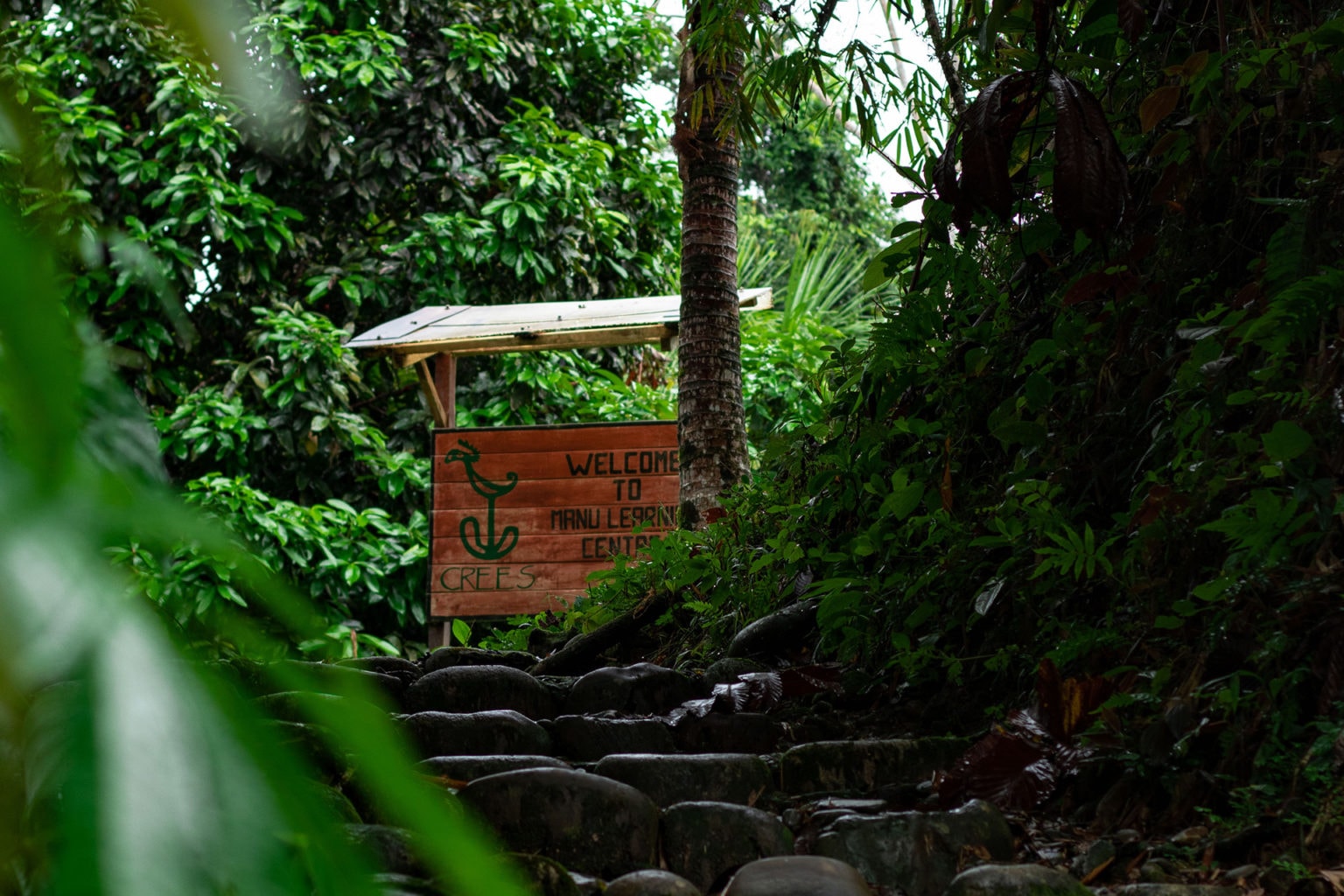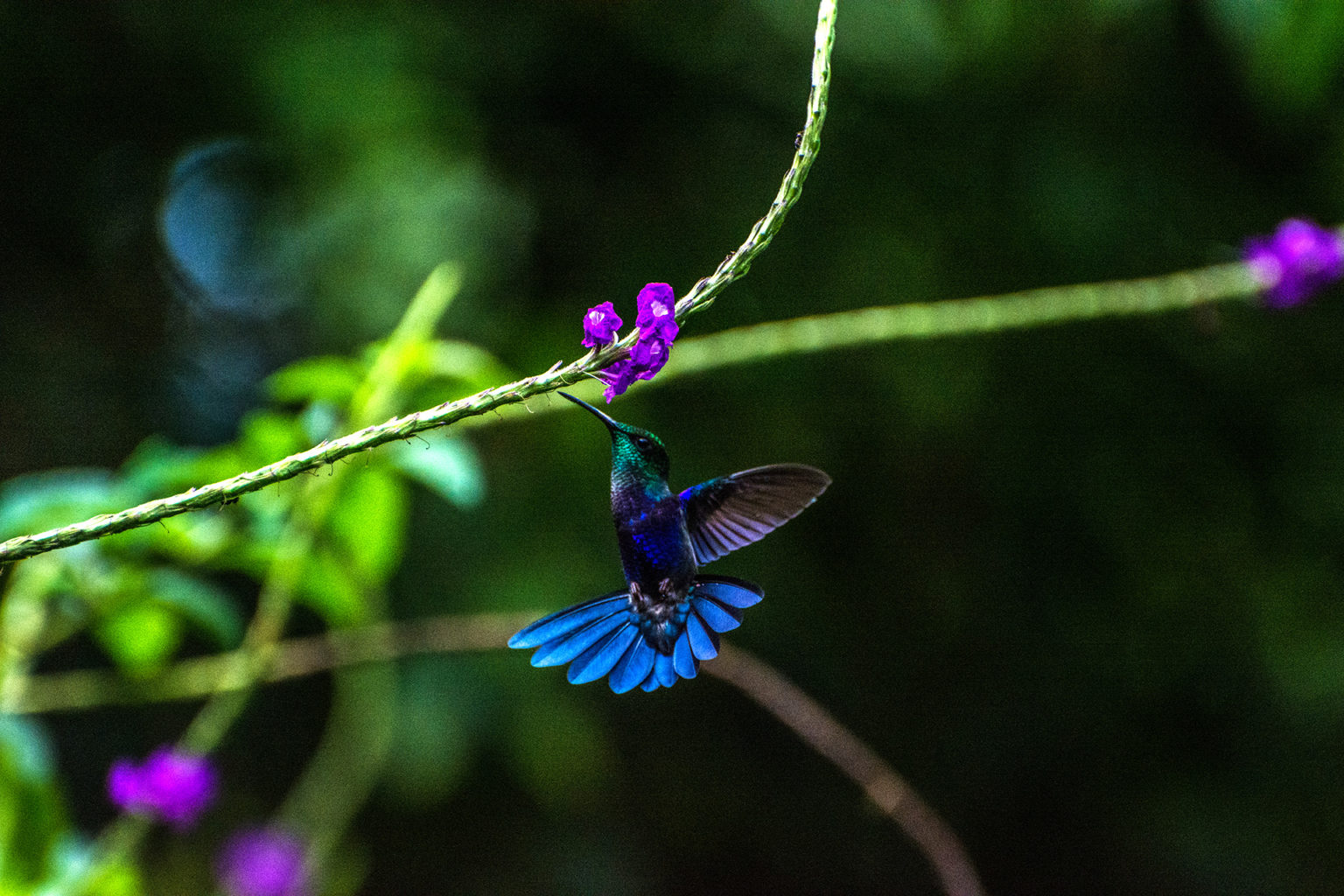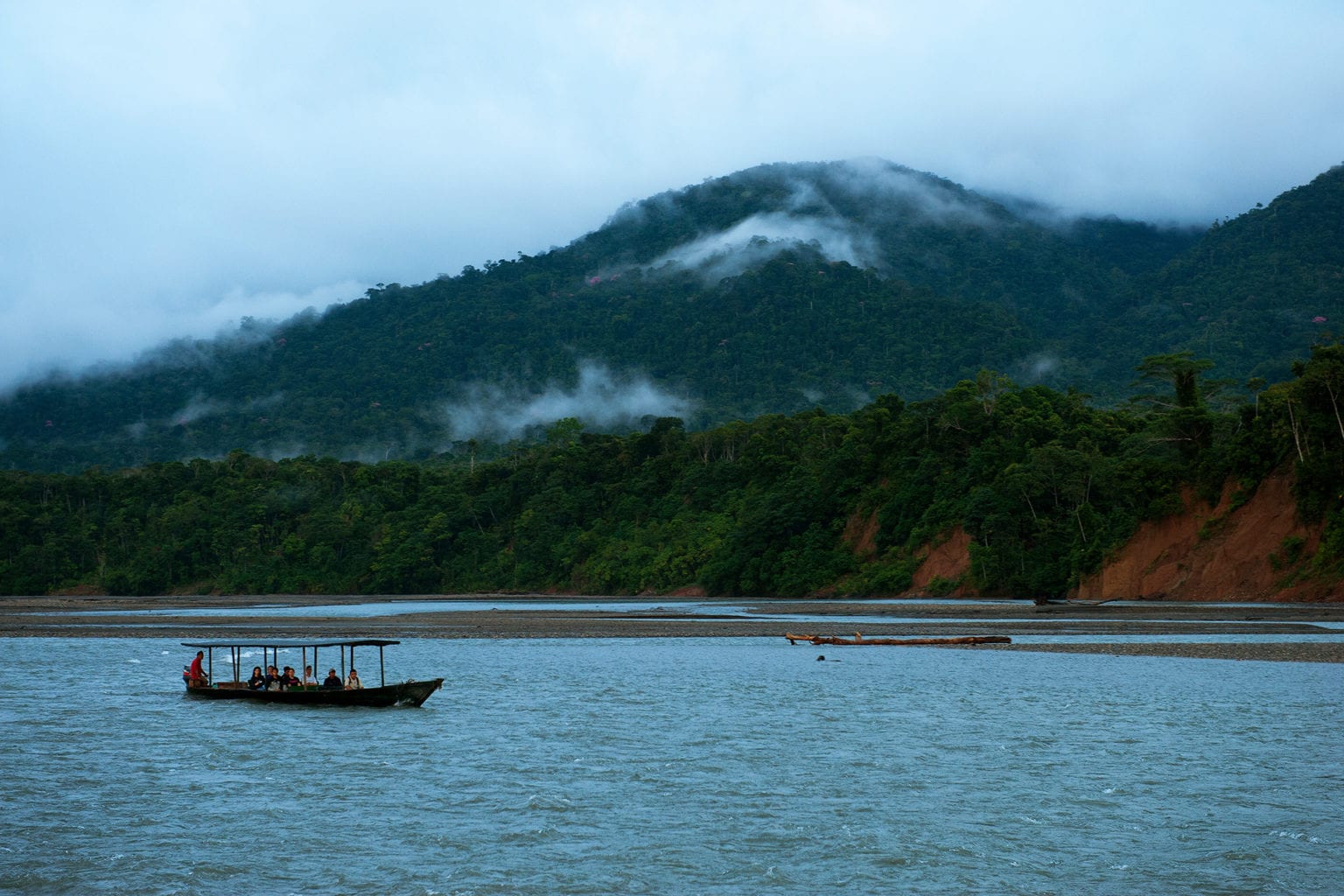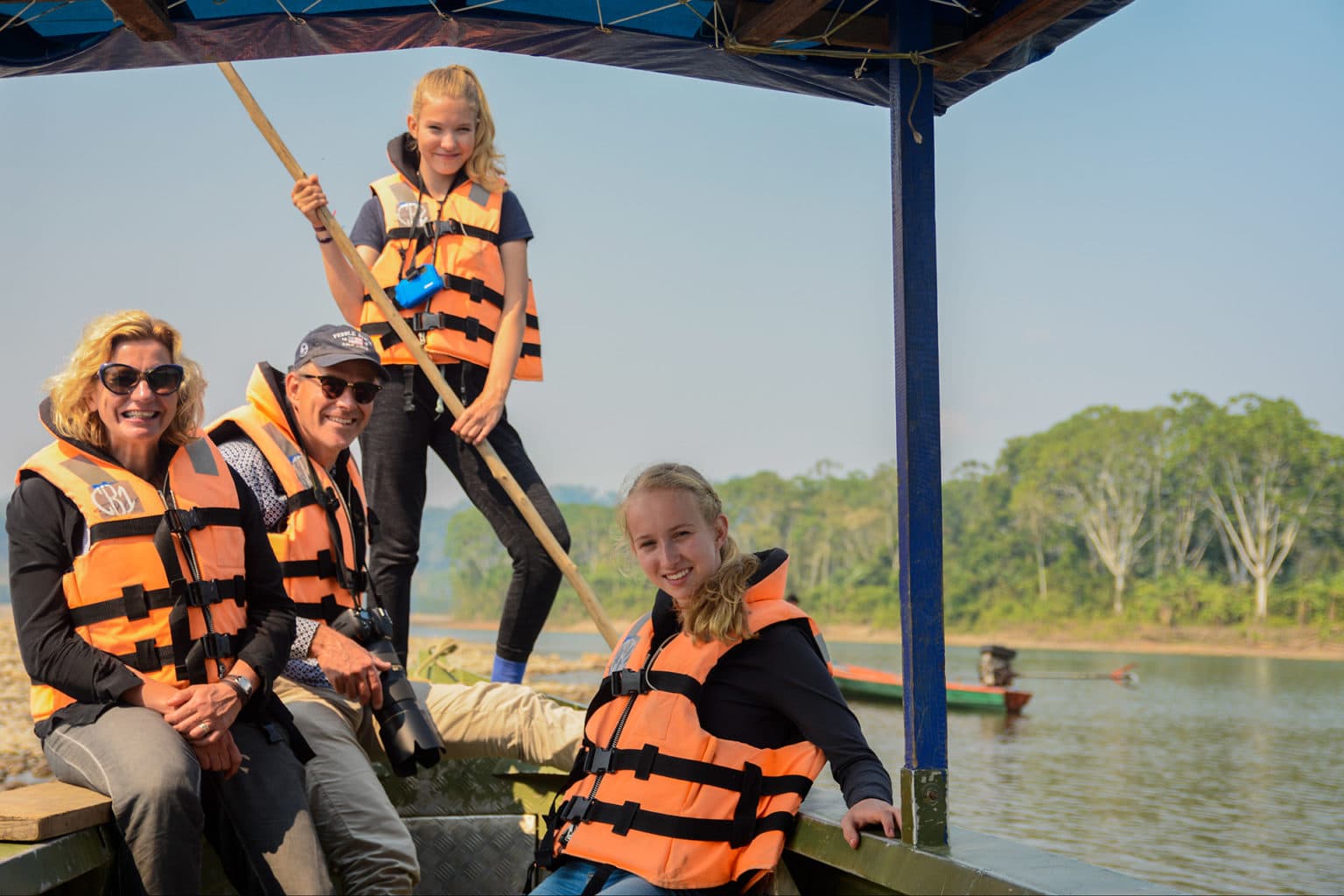



The Manu Pioneer 4D/3N
A fantastic experience for the first time visitor, this tour encompasses highlights of the Amazon. You will explore the mesmerising forest and learn about the local culture.
DURATION
LODGING
TYPE
Accomodation
For this tour you are going to spend one night at Manu Cloud Forest and two nights at Manu Learning Centre lodge.
- We have twin or double shared rooms with on-suite private bathrooms and hot water (you can book for single rooms but a single supplement applies)
- It also includes 3 Meals per day taken in a communal dining area and Wi-Fi access between 7-9 pm daily, only at the Manu Learning Centre.
Itinerary
An early start is the journey by road through the Andes and into the Cloud Forest, a unique environment that is truly breathtaking. You make a stop at Paucartambo village and Acjanaco ranger station along the way to experience some local culture and witness the spectacular views. Overnight at a Manu cloud forest lodge.
An early start to the port town Atalaya and you board your motorized canoe to ride down the Madre de Dios river on the way to Manu Learning Centre. After lunch, you can explore the rainforest trail system with our naturalist guides or enjoy the landscape at our viewpoint before spending the evening learning more about the jungle or simply relaxing, watching the beautiful sunset and ending your day with an overnight stay at Manu Learning Centre lodge.
Spend the day getting involved with our conservation projects and joining our researchers in their work while you enjoy the beauty of nature. In the evening there is an opportunity to head out on a night walk inside the forest, if you're feeling brave enough. After a discovery day, you enjoy an overnight stay at Manu Learning Centre lodge.
Take the boat back to Atalaya after breakfast and enjoy the last noises and sights of the rainforest before reaching Cusco. You will be dropped off at your hotel by around 7pm, bringing the tour to an end but the memories of Manu lasting for a lifetime. No accommodation included, breakfast is included.
For this tour, we require a minimum of 2 passengers
Start your journey
FAQ
The best time to visit Manu is during the dry season from April to October. That said, we take educational tours to Manu all year round, even in the rainy season because there are always fascinating things to see and experiences to experience any day of the year!
Dry season is from April to the end of October and the Wet season is from November to end of March.
Your guide will meet you the night before to advise on timings for pick up so make sure you tell us where you are staying in Cusco prior to departure. Normally it is an early start to head down to Manu, departing Cusco from around 6am.
This is totally at your discretion, however we give a guide as $10 per person per day. Don’t forget the drivers who may have shown extreme skill on difficult roads in many cases, but they should be tipped lower than the guides in general terms.
We advise you to arrive a day early for your tour. However, if you do happen to arrive in Cusco on the day of your tour, your guide will be there to pick you up from the airport. They will be holding up a sign that says "Crees" and your names.
No, we provide drinking water for all our guests.
Yes. We provide a secure space for payment.
Yes. We can pick up and drop off in the Sacred Valley if you let us know prior to the tour where you are staying. We do charge an extra $40 USD for the guide to give the pre-departure briefing in the Sacred Valley the night before your tour.
We recommend you take the last departing from Puerto Maldonado back to Cusco or Lima.
Yes, we welcome children from 6 years old and above. The jungle is a wonderful place for them to explore and learn about the natural world.
Simple! Once you decide to book with us, we send you a link to our booking form so we have all your information and when you have paid your deposit then we send you an invoice as confirmation of your booking and you are all set.
Our love and care for Peru is the driving force behind our operating tours and tourism to Manu. For this reason we are extremely concerned to ensure that our impact is always positive and never damaging.
We aim to bring benefit to local communities and to help sustain a healthy environment where both people and nature can thrive. To aid this process, we would like to encourage you to understand and respect local cultures and customs, get involved with local communities, buy locally and support local businesses.
It is located at the furthest tip of the Upper Amazon River, in the remote south-eastern region of Peru. It is a UNESCO World Heritage Site and the largest tropical rainforest biosphere reserve on earth, protecting 4,646,564 acres (1,881,200 hectares) of land; an area almost half the size of Switzerland.
This area is situated within the Amazon River basin and protects almost the entire watershed of the River Manu and most of the tributaries of the River Alto Madre de Dios. The Manu Learning Centre is situated within a regenerating secondary forest, ideally placed for studies of regeneration of habitats after disturbance.
The Manu Biosphere Reserve’s biological diversity is one of the greatest on Earth, and it is home for some exotic species they have never been named. The Puna is home to tassel-eared llamas and alpacas; the cloud forests are inhabited by brilliant red Cock of the Rocks, spectacled Bears and scores of dripping tree ferns.
The lowland rainforest is inhabited by the giant Black Caiman, Giant Otter, 13 species of monkeys and over 1000 species of birds and of course the majestic Jaguar.
Whilst flora of Manu is vastly under-researched, it is thought that over 15 000 species of plant species have been identified in the park, and it is likely that the number of species to be found within the park is well over this figure.
The Amazon climate is generally hot and humid, around 30 degrees. The dry season is from Apr-Oct and the wet season is from Nov-Apr. The wet season is characterised by a few hours of rain each day and temperatures can reach up to 40 degrees.
February is a time of heavy rains and roads can be inaccessible during this period. Then, in May there is often a layer of low cloud over the rainforest. The Manu National Park is closed in February so crees tours to Romero Rainforest Lodge do not operate but the Manu Learning Centre is open all year round.
The Amazon is well known for its huge biodiversity and the wealth of different ecosystems it supports. In each one of these there are always dangers that face visitors, which preparation is key.
Rainforest excursions lead people into the heart of the rainforest on an adventure that will consequently expose them to its raw nature. In order to be prepared please talk to your doctor about their recommendations.
See section below for specific inoculations that are recommended. Due to mosquito related diseases such as malaria, leishmaniasis and even pesky bites, we recommend purchasing an effective repellent and also wear long sleeve shirts and trousers at all times.
General safety and sanitary standards in Peru are often not as high as other countries. Public health facilities are available, but It is essential that you take out fully comprehensive insurance before travelling.
In isolated places such as the Peruvian Amazon there are few facilities available so it is advisable to take a well-equipped first aid kit.
Pharmacies in Peru are well stocked and most products, even antibiotics, can be bought over the counter. Check validity dates on packaging, and there is an important distinction between a recommendation (advice) and a requirement (you may be refused entry to the country without proof of vaccination).
Manu as such is not a malarial area but if you are travelling onwards from any of our tours, please make sure you have the requirements needed. Please consult your GP or health centre for accurate details of malarial areas within the region.
If you have doubts about Covid-19, please click here to be redirected to our Covid-19 latest information tab.
It is sensible to take cash as much as your insurance will allow, which can be exchanged locally. The currency in Peru is the Sol. The value varies but it is around 3 to 4 soles to the dollar and 5 to 6 soles to the pound.
We recommend taking US dollars with you for your arrival as it is normal to pay for hotels and tourist services in dollars throughout Peru. All other day to day expenses are paid for in soles. One dollar bills can be useful for tipping and paying fees on borders if you are going outside Peru before/after your trip with crees. Do not take money from your own home country as it can be difficult to exchange.
Credit cards are widely accepted and are valid as proof of funds at borders. Visa and MasterCard are the most widely accepted, and American Express not so much. Using cash points locally is a great way to get cash out and the rate of exchange is often the most favourable. It may be worthwhile advising your bank of where you are going as often some banks detect irregular spending abroad and freeze the account which can take days to sort out.
You need to bring cash to make purchases in the nearby towns at the rainforest and for your bar/shop bill at the Manu Learning Centre and/or Romero Rainforest Lodge – we do not take card payments.
The Spanish word for tipping is propina, and we cannot express enough that tipping is a personal choice and one should not feel obliged to give one if you are unsatisfied with the service.
With regards to guides it is advisable to tip $5.00 per couple per half day but of course if you have been particularly satisfied by all means give more!
For naturalist guides, the convention is more like $10 per person per day. Don’t forget the drivers who in many cases may have shown extreme skill on difficult roads but in general terms should be tipped lower than the guides.
If you are from the UK, USA, Canada, or Australia you do not require a visa to come through Peru as a tourist.
We recommend that you buy comprehensive travel insurance for your trip. It is important to check that you are covered for trekking activities above 2500m (both Cusco and the Inca trail are higher than this), repatriation, a minimum medical cover of $50000 and an emergency medical evacuation minimum of at least $10,000,000 for emergency medical transport.
Your passport must have at least six months before it expires from the date you intend to return at the end of your trip. It should also have a few unused pages for the necessary visas and stamps that you will accumulate on your travels. If your flight goes via the USA then your passport will need to be one that can be read electronically or they will not let you through, and you will also need to register on the US government’s new visa waiver list. Please see http://www.unitedstatesvisas.us/ for more information.

